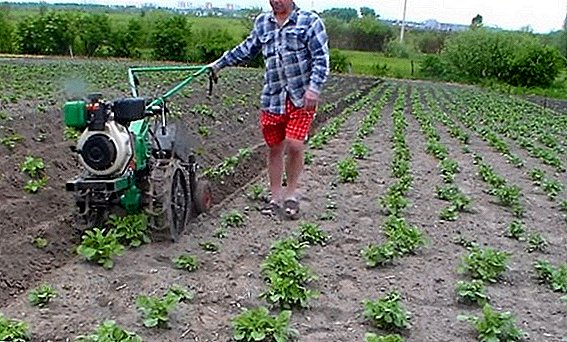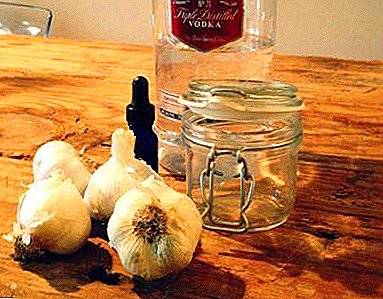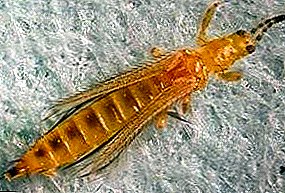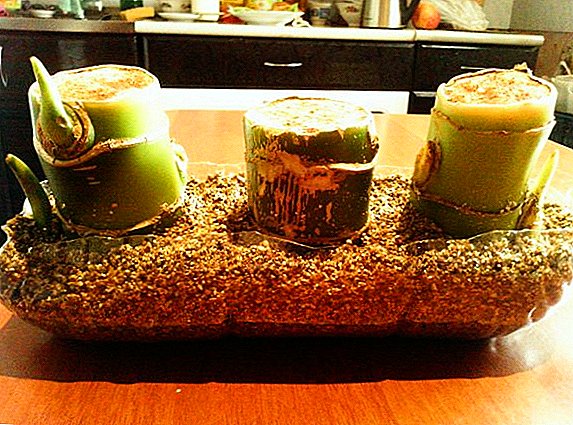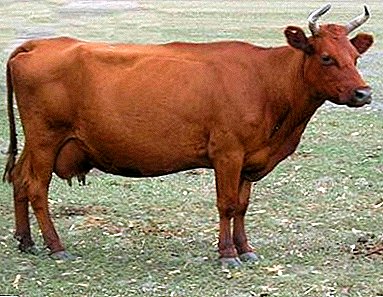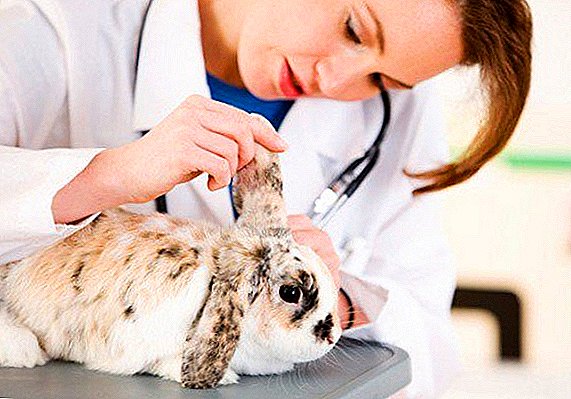 Rabbits are subject to many diseases. They have frequent viral diseases, their ears and eyes may hurt. Improper conditions and insufficient sanitation of cells lead to the development of diseases of the digestive system, kidneys, paws and teeth. Among these diseases there are quite serious ones that can lead to death. In order to detect the occurrence of the disease in a rabbit in time, to immediately assist the animal and prevent the spread of infection, it is necessary to know the symptoms of each of them. Below we provide a list of the most common ills of rabbits.
Rabbits are subject to many diseases. They have frequent viral diseases, their ears and eyes may hurt. Improper conditions and insufficient sanitation of cells lead to the development of diseases of the digestive system, kidneys, paws and teeth. Among these diseases there are quite serious ones that can lead to death. In order to detect the occurrence of the disease in a rabbit in time, to immediately assist the animal and prevent the spread of infection, it is necessary to know the symptoms of each of them. Below we provide a list of the most common ills of rabbits.
Did you know? As a result of various diseases, 25% of animals are rejected, 10% die.
Preventive measures: disease prevention
Of course, it is better not to allow the disease than to treat their consequences.
Prevention of rabbit diseases should be carried out using such measures:
- vaccination according to the requirements of the veterinary service;
- regular cell disinfection;
- disinfection of drinking bowls and feeders (once every 10 days);
- control over the purity, quality of feed and water;
- elimination of dampness and drafts;
- maintaining optimal temperature for animals;
- preventive examinations;
- compliance with quarantine measures.
 When buying new rabbits, they must be kept separate from others for 21 days. During this time, symptoms may appear. In their absence, animals are placed to the rest, but kept in different cages.
When buying new rabbits, they must be kept separate from others for 21 days. During this time, symptoms may appear. In their absence, animals are placed to the rest, but kept in different cages.Obligatory prophylactic examinations are subject to the crawl before mating, around, after the okrol. Newborn rabbits are examined on the second day after birth and before being placed on the rest of the animals. Then inspections are held once every two weeks.
If there has been an outbreak of a viral disease, the cell, drinkers and feeders are disinfected immediately. Patients rabbits are placed in quarantine.
Important! Disinfectants must be selected for a specific viral pathogen. What exactly is disinfected cell maintenance, you can learn from the description of infectious diseases.
Signs of an unhealthy animal
When a rabbit feels bad, it is noticeable in its appearance and behavior. Healthy rabbits behave actively, eat well. The first sign that something is wrong with the animal is refusal to eat. Sick animals look lethargic, moving restlessly. The disease is also displayed on the state of their wool - it loses shine, it becomes dull, crumpled.
 In viral diseases, a runny nose appears in the eared animal, eyes turn sour, discharge from the mouth appears. He has fast breathing (usually 50-60 per minute) and heartbeat (usually 120-160 beats per minute), the temperature rises above normal 38-39.5 ° C. Also characteristic symptom are drooping ears.
In viral diseases, a runny nose appears in the eared animal, eyes turn sour, discharge from the mouth appears. He has fast breathing (usually 50-60 per minute) and heartbeat (usually 120-160 beats per minute), the temperature rises above normal 38-39.5 ° C. Also characteristic symptom are drooping ears.
Rabbit Disease
All diseases of rabbits can be divided into two groups: non-infectious and infectious. From which group the disease belongs, the behavior of the rabbit breeder during its detection will also depend. Thus, in the case of a disease of the infectious origin of sick rabbits, it will be necessary to isolate and disinfect the cell.
Common reasons why rabbits get sick are:
- improper feeding;
- feeding spoiled foods;
- lack of vitamins and minerals in the feed;
- low temperatures and high humidity;
- unacceptable conditions of detention, improper cell coverage;
- mechanical damage.
Did you know? 70% of all non-communicable diseases in rabbits account for problems with the gastrointestinal tract.With the development of diseases with non-viral etiology associated with intestinal or stomach disorders in rabbits, symptoms such as softened or liquid feces with mucus, abdominal distension, constipation, and lack of appetite can be observed.
 In case of such symptoms, animals should be put on a starvation diet for 12-20 hours. Then gradually introduce soft feed fresh preparation. This can be steamed in boiled water feed with the addition of boiled potatoes.
In case of such symptoms, animals should be put on a starvation diet for 12-20 hours. Then gradually introduce soft feed fresh preparation. This can be steamed in boiled water feed with the addition of boiled potatoes.
In the absence of feces, the rabbits are given Carlsbad (Glauber) salt (3-5 g) or castor oil (1-1.5 teaspoons). They are also shown rubbing the abdomen with a solution of ordinary salt (1 tsp. / 0.5 glass of water) and enema with soapy water. After a bowel movement, the crawl is fed with carrots and oatmeal.
Rabbits suffering from diarrhea are watered with a decoction of oak bark (1-2 tsp) and a solution of 0.1 g syntomycin for 1-2 times a day.
Below we look at what else rabbits are sick with, as well as step-by-step instructions that their owner should adhere to in this or that disease.
Aspergillosis (pneumomycosis)
Infectious fungal disease, infection of which occurs through the respiratory tract, feed.
 Symptoms:
Symptoms:
- labored breathing;
- sneezing;
- mucosal yellowness;
- refusal to eat
Scaly scabies (acarosis, notoedrosis)
A fairly common disease among rabbits. In particular, young individuals are subject to it. It is excited by a tick.
Symptoms Manifestation of skin peeling in the area of the superciliary arches, lips, nose, ears. Further, it extends to the back, legs, belly. With a strong defeat, the crawl refuses to eat and dies.
Treatment. The affected areas are smeared with turpentine, green soap, birch tar, phenothiazine tar tar liniment, water emulsion of neocidol (0.1%). Disinfect the cell.
Ear Scabies (psoroptosis, chorioptosis)
Ear scabies in rabbits is caused by a tick. Sucking blood, it causes irritation and itching.
Symptoms:
- wounds, irritation on the skin;
- bubbles on the skin, from which the liquid is released;
- loss of appetite, exhaustion.
 Treatment. Sores in the ears of rabbits in the form of crusts grease with turpentine. After peeling, they are removed and destroyed by incineration. The procedure is repeated after 4-5 days. The cage and inventory are disinfected with creolin solution (5%).
Treatment. Sores in the ears of rabbits in the form of crusts grease with turpentine. After peeling, they are removed and destroyed by incineration. The procedure is repeated after 4-5 days. The cage and inventory are disinfected with creolin solution (5%).Inflammation of the lungs (bronchitis)
One of the most frequent diseases of rabbits are bronchitis and pneumonia. This is explained by the fact that animals are very sensitive to temperature changes, drafts, high humidity.
Symptoms In diseases of the lower respiratory tract is observed depression of rabbits, lack of appetite, the secretion of mucus from the nose, increased body temperature. The animal often breathes heavily, with whistles and wheezes.
Treatment. With such symptoms, rabbits must be shown to a specialist. Usually bronchitis and pneumonia in rabbits is eliminated with the help of treatment with such drugs as Tromexin, Brovaseptol, Brovaf new. The course of treatment is 10-15 days. The animal is abundantly watered and well fed. 
Worms
Worm invasion in rabbits is difficult to identify, it has no obvious symptoms. Infection prone to animals of any age.
Symptoms Possible loss in weight, loss of appetite, diarrhea, apathy.
Treatment. In order to reduce the risk of development of worms in rabbits, some precautionary measures must be observed: clean the cells daily, during hot periods, drinkers and troughs more often (once every five days) with boiling water or steam, regularly change the water for drinking.
When detecting worms, animals are given "Naftamon", homotoxicological and homeopathic medicines.
Coccidiosis
Coccidiosis - a viral disease that usually affects the younger generation up to 16 weeks of age. Infection occurs through the faecal route. Uncontrolled housing conditions and inadequate food contribute to the development of the disease.
Symptoms:
- lack of appetite;
- weakness;
- diarrhea or constipation;
- bloating;
- constant thirst;
- dull, ruffled wool.
Treatment. For the purpose of prophylaxis, animals are kept in cells with non-continuous floors (rack, plank, lattice). In the summer, the feeders should be cleaned every day; in the winter, this procedure should be carried out every other day. The cells are disinfected every 10 days by washing with boiling water or by treatment with a torch. It is advisable not to use legumes, sour herbs, bran for feeding. Feed only from feeders. Nursing nursing rabbits once a week, wash with warm water.  Also, all females in the morning, it is desirable to drink iodine tincture according to this scheme:
Also, all females in the morning, it is desirable to drink iodine tincture according to this scheme:
- in the period from the 25th day of sukropolnosti to the 5th day of lactation - 100 ml of iodine tincture (0.1%);
- from the 10th to the 25th day of lactation - 200 ml of iodine solution (0.2%);
- From the 30th to the 40th day of lactation - 300 ml of iodine tincture (0.1%).
- "Sulfadimethoxine" - on the first day: 0.2 g; 2-5 days: 0.1 g;
- "Norsulfazol" - 0.4 g;
- "Ftalazol" - 0.1 g
Colibacteriosis
Frequent infectious disease. Causes upset digestive tract. Transferred by feed, water, manure. With this disease, up to 90% of rabbits die.
Symptoms Characteristic signs of colibacillosis are: refusal to eat, depression, inactivity, diarrhea with the release of mucus, a sharp loss in weight.
Treatment. The animal is isolated and fed to a 12-hour diet. Then feeds that are easily digested are introduced. Orally give "Levomitsetin", "Biomitsin", "Sintomitsin" and other drugs. The course of treatment is 3-5 days.
Conjunctivitis
 As a result of mechanical damage to the mucous membrane of the eye - ingress of dust, feed, sand, any chemicals, as well as a lack of vitamin A in the body, a rabbit may develop conjunctivitis.
As a result of mechanical damage to the mucous membrane of the eye - ingress of dust, feed, sand, any chemicals, as well as a lack of vitamin A in the body, a rabbit may develop conjunctivitis.
Symptoms With conjunctivitis, the crawl will experience redness, swelling of the eye, increased tearing, and discharge of pus from the conjunctival sac.
Treatment. Eyes washed with boric acid (2%), instilled with zinc drops.
Listeriosis
This infectious disease affects the liver of a rabbit. Most often develops in pregnant women. It represents a danger to humans.
Listeriosis is a very dangerous disease in rabbits that is not treatable. There are three stages of its development: chronic, acute, especially acute.
Symptoms The chronic form of the disease leads to death and decay of the baby in the womb. In the future, females who have had this disease will not be able to produce offspring. In acute form, miscarriage occurs, paralysis of the hind legs of the bunny and her subsequent death. In the super-acute stage, females die suddenly.
Treatment. Animals are destroyed, carry out disinfection and cleaning of cells.
Mastitis in rabbits
Infectious mastitis develops in nursing rabbits. Most often observed in the first half of lactation.
Symptoms:
- reddening and hardening of the udder;
- education on the udder ulcers and wounds.
 Treatment. For the treatment of this disease, you must call a specialist veterinary services.
Treatment. For the treatment of this disease, you must call a specialist veterinary services.To prevent its development, rabbit kept in clean conditions, on a soft bedding. They are regularly inspected. With the advanced stage of the disease the rabbit is subject to slaughter. Meat is not suitable for food.
Myxomatosis
Myxomatosis is one of the most dangerous viral diseases in rabbits. It develops rapidly - the animal may die within one to two weeks.
Symptoms:
- small size of the tumor in the form of nodes on the head, genitals, near the anus;
- bumps on the ear of a rabbit;
- puffiness;
- swelling of the eyes;
- drooping ears.
 Treatment. There is no way to combat this disease. Vaccination should be timely. The cell and the place of slaughter of diseased animals are disinfected with caustic soda (3%), formalin, bleach, and lysol (5%). Skins burned. Clothes in which a person cares for rabbits should be boiled for an hour. Animal feces are buried in the ground at a depth of 1 m. The outbreak of the disease is notified to the veterinary service, which introduces quarantine for two weeks.
Treatment. There is no way to combat this disease. Vaccination should be timely. The cell and the place of slaughter of diseased animals are disinfected with caustic soda (3%), formalin, bleach, and lysol (5%). Skins burned. Clothes in which a person cares for rabbits should be boiled for an hour. Animal feces are buried in the ground at a depth of 1 m. The outbreak of the disease is notified to the veterinary service, which introduces quarantine for two weeks.Poisoning
The cause of poisoning in rabbits can serve as inedible herbs, trapped in food.
Symptoms:
- vomiting;
- diarrhea;
- increased salivation.
Poddermatit
 The reasons for the rabbit trauma are not established today.
The reasons for the rabbit trauma are not established today.
The disease is typical for animals with a large mass, little pubescent foot pads and their content in cells with a mesh floor or in unsanitary conditions.
Symptoms It is characterized by the formation of cracks, corns, hematomas on the soles, which subsequently bleed and rot. Determine that the rabbit is sick, can be due to the fact that he often steps from paw to paw, he has no appetite. The acute course of the disease leads to death.
Treatment. To avoid diseases of the paws of rabbits, on the floor in a cage, you must lay an additional wooden floor treated with lime. In the initial stage of the disease, wounds are treated with 10% zinc or lead ointment. Corn cleaned and covered with iodine. Bleeding ulcers after stopping bleeding are treated with tetracycline or Vishnevsky ointment, dressings are applied, which must be updated every two to three days.
Rickets
 Rickets is observed in young rabbits, mainly in winter, with insufficient sunlight. The development of the disease leads to a small amount of vitamins and minerals in the feed and lack of vitamin D.
Rickets is observed in young rabbits, mainly in winter, with insufficient sunlight. The development of the disease leads to a small amount of vitamins and minerals in the feed and lack of vitamin D.
Symptoms The initial stage of rickets is manifested by disorders of the gastrointestinal tract. The rabbit gnaws a cage, eats its own feces. He begins to lag behind in his growth from his peers, his spine and extremities are bent. The advanced stage is characterized by convulsions, agitated behavior of the animal.
Treatment. At the first symptoms it is necessary to correct the diet of rabbits by introducing sufficient amounts of vitamins into it. The cell is exposed to a well-lit area. Rabbits give 1-2 drops of "Trivita" per day.
To prevent rickets, rabbits need to be given food containing vitamin D, phosphorus and calcium. You can feed them with vitamins and fish oil.
Rhinitis (pasteurellosis)
Not only rabbits are sick with pasteurellosis, but almost all farm animals and birds. But only in eared this viral disease is characterized by a rapid course - an animal can die within two to five days. Transmitted by air, through feed and water. Mortality is observed in 15 - 75% of the herd. Only a small percentage of rabbits with a strong immune system can withstand the disease on their own, but still are virus carriers.
Symptoms of pasteurellosis in rabbits:
- discharge from the nose and eyes;
- increase in body temperature to 41-42 degrees;
- labored breathing;
- lack of appetite;
- diarrhea, bloating.
How to treat rabbits for this disease?
 Sulfonamide preparations are used (0.2-0.3 g per uterine rabbit; 0.1-0.2 g per pet rabbit). They are administered three days. Also conduct intramuscular injections drugs "Tetracycline" or "Biomitsin".
Sulfonamide preparations are used (0.2-0.3 g per uterine rabbit; 0.1-0.2 g per pet rabbit). They are administered three days. Also conduct intramuscular injections drugs "Tetracycline" or "Biomitsin".
Effective is the complex treatment of sulfa and antibacterial drugs. In the treatment of pasteurellosis, the following antibiotics are used for rabbits: “Oxytetracycline”, “Oxy 200”, etc. How to use them is indicated in the instructions for the preparation.
With the outbreak of this disease, the cells and inventory are disinfected with formalin solution (1%), carbolic acid (3%), lysol (3%), caustic soda (2%).
Salmonellosis (paratyphoid)
Salmonella, or paratyphoid in rabbits is rare. It affects all generations, especially the young - from one to three months. Infection occurs from sick animals through feed, water, litter, inventory. The disease is characterized by a rapid course and death in two to five days.
Symptoms When infected with paratyphoid rabbits sluggish, sedentary, refuse to eat, diarrhea.
Treatment. With the development of salmonellosis in rabbits, both sick and healthy individuals are treated. They are given "Furazolidone". Patient doses: 30 mg / 1 kg live weight, twice a day. Doses for healthy: 15 mg / 1 kg of live weight, 2 times a day. The course of treatment is a week.
Cells and equipment must be disinfected.
Staphylococcosis
Staphylococcus is a disease that often affects rabbits. All ages are subject to it.Observed in rabbits kept in unsanitary conditions, as well as having minor injuries on the skin.
 Symptoms The main sign of the presence of golden or white staphylococcus in the body is the formation of ulcers throughout the body of the animal.
Symptoms The main sign of the presence of golden or white staphylococcus in the body is the formation of ulcers throughout the body of the animal.
Treatment. To cure rabbits, wounds are treated with penicillin ointment, pyoctanin solution, iodine-glycerin. Inside animals give "Streptocid", "Norsulfazol." The course of treatment will be seven days. Anti-staphylococcal serum (2 ml / 1 kg of live weight) is also used.
Stomatitis (wet face)
Infectious stomatitis, or lamb, affects small rabbits between the ages of three weeks and three months.
Symptoms:
- white plaque on the tongue, which later turns into gray-red;
- tongue ulcers;
- excessive salivation and drooling;
- weight loss;
- chomping sound when chewing;
- hair loss and inflammation of the skin in the lower jaw;
- diarrhea;
- lethargy.
Patients with rabbits, 1-2 times a day, are treated with oral mucosa with 2% solution of blue vitriol, diluted in water. Therapy is also possible streptotsidom. The crushed half of the tablet is poured into the mouth, after 10 hours the second half of the tablet is given. In the advanced stage, the treatment is carried out by two methods simultaneously: first, first, then second.
0.1 g streptocide is orally administered to healthy rabbits.
Important! During this period, rabbits will need improved nutrition in the form of soft feed, for example, yogurt.
 If the treatment is carried out on time, recovery may occur on the third day. With missed opportunities, the rabbit dies within a week. If the treatment is successful, then the animal should show no signs of illness for two weeks. The meat of this rabbit can be eaten. However, it is not allowed to mate.
If the treatment is carried out on time, recovery may occur on the third day. With missed opportunities, the rabbit dies within a week. If the treatment is successful, then the animal should show no signs of illness for two weeks. The meat of this rabbit can be eaten. However, it is not allowed to mate.Ringworm
Ringworm rabbits become infected when they come into contact with a sick animal, through food, bedding. Infected crawls are dangerous to humans.
Symptoms With the defeat of the disease on the head, neck, limbs of animals formed round or oblong spots 1-2 cm in size with a scaly surface.
Treatment. Isolation of sick rabbits. Cell disinfection. Destruction of feed and bedding. Affected areas on animals' bodies are lubricated with iodine (10%) or salicylic alcohol. After the iodine treatments, the places are smeared with fish oil. With a strong infection, the rabbits are destroyed.
Solar and heat strokes
 Suns and heat strokes happen to rabbits, which are kept in direct sunlight and in stuffy, unventilated rooms with high levels of humidity.
Suns and heat strokes happen to rabbits, which are kept in direct sunlight and in stuffy, unventilated rooms with high levels of humidity.
Symptoms It is possible to determine that a rabbit has a blow by the following signs:
- he is lying on his side or stomach with his legs extended;
- he has no appetite;
- there is lethargy and lack of motor activity;
- convulsions of the limbs;
- rapid breathing;
- redness of the mucous membranes of the mouth and nose.
Tularemia
Infectious disease, accompanied by fever, miscarriages in pregnant women, paralysis, swollen lymph nodes. Infection is possible through feed, water, air, insect bites.
Symptoms:
- cough;
- labored breathing;
- formation of ulcers small in size.
Fascioliasis
Fascioliasis can occur if rabbits are watered with water from natural reservoirs or are fed with grass that grows in places where the pathogen inhabits the mollusk small pond snail.
 Symptoms The disease can be identified by such signs as rapid heartbeat, fever, eyelid edema, yellowness of the mucous eyes and mouth, unhealthy type of hair.
Symptoms The disease can be identified by such signs as rapid heartbeat, fever, eyelid edema, yellowness of the mucous eyes and mouth, unhealthy type of hair.
Treatment. To cure the rabbit, it is injected with a probe 1-2 ml of carbon tetrachloride.
Cysticercosis
Cysticercosis most often get sick rabbits up to three months. If measures are not taken in time, death can occur on the sixth day of illness.
Symptoms:
- lack of appetite;
- apathy, lethargy;
- diarrhea;
- weight loss;
- yellowness of mucous membranes.
Proper nutrition, cleanliness, regular check-ups and preventive measures to prevent diseases should be indispensable conditions for the care of rabbits. This is the only way to breed healthy, strong animals with high-quality skins and tasty meat.


